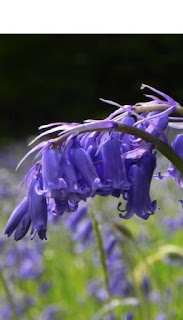Whatever exciting colour combinations we come up with at Chelsea Flower Show, a dreamy green and white scheme is always the people’s favourite. The light levels in the Great Floral Pavilion can be quite low, like a shady corner in the garden. In these conditions white shines softly and reassuringly against dark green foliage. I love using green and white in gardens, particularly in those awkward shady corners, or under the dappled light from overhanging trees.
Reliable evergreens are always the basis of my planting and if I had to pick just one dwarf evergreen shrub it would always be Sarcococca confusa, the Christmas box. This lovely little shrub forms a dense clump of suckering stems reaching 60-80cm (2 – 2.5 feet) in height. The small, shining evergreen leaves are deep holly green and are gently waved, catching the light from all directions.
Sarcococca confusa never gets too tall, never needs pruning (although it’s great for cutting for floral decoration). It grows on clay and chalk and is excellent in shade. In mid to late winter tiny white flowers appear in the leaf axils, they may not be showy, but they will fill the garden with their powerful sweet fragrance.
I like to plant sarcococca with another of my favourite evergreens: Euonymus fortunei ‘Silver Queen’. This had deep green leaves, variegated with sage and irregularly edged with creamy white. Where it catches direct sun the leaf margins may flush pink in winter. It has a compact, spreading habit and makes excellent ground cover. If you plant it against a wall or fence it will make an excellent short climber, up to 3 metres (10 feet) or so. This is another low maintenance shrub that works hard to earn its keep. 

So that’s two dwarf shrubs put together to create a wonderful planting solution, so what shall we add? You can’t go wrong with one of the hybrid hellebores. I would choose a white form of Hillier x hybridus because I love the dark green architectural foliage. I cut this back in mid winter to make way for the emerging flowers and new leaves. 

The flower stems quickly rise to produce elegant nodding cups of pure white, with a hint of green, clustered beneath a ruff of small green leaves. Hellebores are long-term perennials that will delight year after year
I could enhance this combination with a couple of handfuls of flowerbulbs. Snowdrops, Galanthus nivalis will love the shade from the trees and shrubs, and their pure white blooms will show up against the deep green foliage of the sarcococca.
I will also add the ice white blooms of Narcissus ‘Thalia’, my favourite narcissus. This is a multi-headed variety with the most delicately refined of blooms which will follow on from the snowdrops and sarcocooca and extend the season of the hellebores.
For another evergreen perennial I would choose the lovely Heucherella ‘Tapestry’. This has jigsaw-like leaves veined with deep slate-brown. As the foliage remains close to the ground it will nestle happily beneath the arching stems of the sarcococca and will contrast beautifully with the creamy-white variegation of the heucherella.
A handful of plants and bulbs, all good garden performers, nothing complicated – just a simple, stunning solution to a shady spot in your garden. Why not give it a go? Restricting to colour palette works!



















